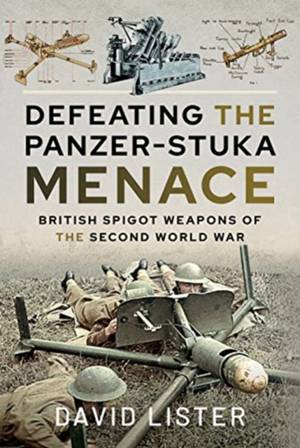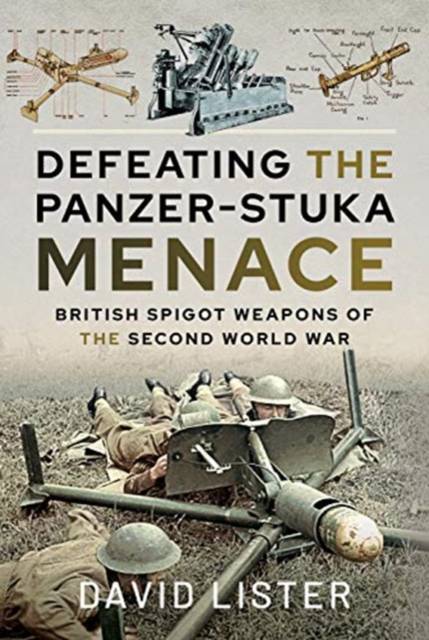
- Afhalen na 1 uur in een winkel met voorraad
- Gratis thuislevering in België vanaf € 30
- Ruim aanbod met 7 miljoen producten
- Afhalen na 1 uur in een winkel met voorraad
- Gratis thuislevering in België vanaf € 30
- Ruim aanbod met 7 miljoen producten
Zoeken
Defeating the Panzer-Stuka Menace
British Spigot Weapons of the Second World War
David Lister
Hardcover | Engels
€ 34,95
+ 69 punten
Omschrijving
Weapons of myth and scandal, that is the best way to describe the spigot weapons deployed by the British in the Second World War.
Unlike conventional mortars, a spigot mortar does not have a barrel through with the round is fired. Instead, the general concept involves a steel rod - the 'spigot' - onto which the bomb is placed before it is fired. This design was, as David Lister reveals, the basis of a number of successful weapons used during the Second World War.
The myth of the PIAT man-portable anti-tank weapon is, for example, tied closely to British paratroopers struggling in the ruins of Arnhem with an inadequate design, one inferior to the German equivalent. Similarly, the myth of the Blacker Bombard is of a useless weapon, one of dubious quality, that was dumped on the unsuspecting Home Guard.
In reality, neither scenario is the case. Both weapons were devastating creations of war, often superior to any other nation's counterpart.
At sea, the Hedgehog anti-submarine weapon was another powerful spigot weapon. It was undoubtedly capable of sweeping the U-boats from the sea and even winning the Battle of the Atlantic before it had really begun. That it did not is one of the great scandals of the Second World War, one hidden by wartime secrecy until now.
In Defeating the Panzer-Stuka Menace the author explores a large number of spigot weapons from the Second World War, many of which were created by the fertile mind of one of Britain's great weapon inventors, Latham Valentine Stewart Blacker.
Unlike conventional mortars, a spigot mortar does not have a barrel through with the round is fired. Instead, the general concept involves a steel rod - the 'spigot' - onto which the bomb is placed before it is fired. This design was, as David Lister reveals, the basis of a number of successful weapons used during the Second World War.
The myth of the PIAT man-portable anti-tank weapon is, for example, tied closely to British paratroopers struggling in the ruins of Arnhem with an inadequate design, one inferior to the German equivalent. Similarly, the myth of the Blacker Bombard is of a useless weapon, one of dubious quality, that was dumped on the unsuspecting Home Guard.
In reality, neither scenario is the case. Both weapons were devastating creations of war, often superior to any other nation's counterpart.
At sea, the Hedgehog anti-submarine weapon was another powerful spigot weapon. It was undoubtedly capable of sweeping the U-boats from the sea and even winning the Battle of the Atlantic before it had really begun. That it did not is one of the great scandals of the Second World War, one hidden by wartime secrecy until now.
In Defeating the Panzer-Stuka Menace the author explores a large number of spigot weapons from the Second World War, many of which were created by the fertile mind of one of Britain's great weapon inventors, Latham Valentine Stewart Blacker.
Specificaties
Betrokkenen
- Auteur(s):
- Uitgeverij:
Inhoud
- Aantal bladzijden:
- 264
- Taal:
- Engels
Eigenschappen
- Productcode (EAN):
- 9781526787156
- Verschijningsdatum:
- 26/08/2021
- Uitvoering:
- Hardcover
- Formaat:
- Genaaid
- Afmetingen:
- 166 mm x 240 mm
- Gewicht:
- 725 g

Alleen bij Standaard Boekhandel
+ 69 punten op je klantenkaart van Standaard Boekhandel
Beoordelingen
We publiceren alleen reviews die voldoen aan de voorwaarden voor reviews. Bekijk onze voorwaarden voor reviews.








